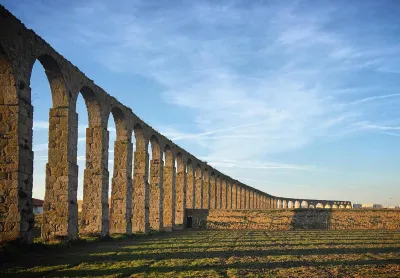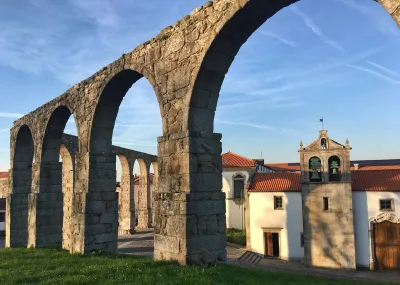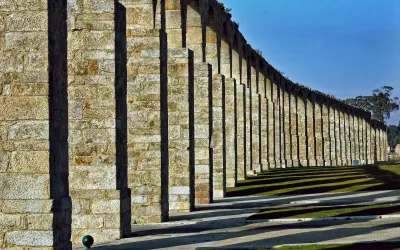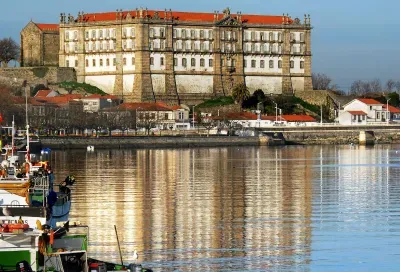 Sergei Gussev CC BY-SA
Sergei Gussev CC BY-SA
Santa Clara Aqueduct Sergei Gussev CC BY-SA
Aqueduct de Santa Clara António Amen CC BY-SAVirtually from the founding of the Santa Clara monastery in the early 14th century it was apparent that having an adequate water supply was going to be an issue. Initially there was a cistern within the monastery but as it grew this was no longer sufficient.
In 1626 an ambitious construction project to carry water from a spring on high ground at Terroso, around 4 kilometres (2.5 miles) away, commenced. It was 10 years before the next abbot realised there had been something of a catastrophic miscalculation; a significant slope in the original route meant the building work to date was completely useless.
Work was halted and did not begin again for another 70 years. This time no such mistakes were made and the first water flowed into the monastery on the 20th October 1714.
The completed aqueduct was an impressive structure consisting of a reputed 999 granite arches along its length. With the dissolution of the monasteries in the 19th century the aqueduct became somewhat obsolete and over the following centuries a considerable number of sections were lost.
In one incident 46 arches collapsed during a storm while other sections were removed on purpose to improve the view or access. Over recent years efforts have been made to restore and protect the structure although arches have collapsed and been left unrepaired as recently as 2009.
Despite the damage the years have wrought on this epic feat of 17th and 18th century construction it is still an impressive sight with many sections remaining relatively intact.
Vila do Conde
Vila do Conde travel guide »
The coastal town of Vila do Conde lies at the mouth of the River Ave around 30 km north of Porto. This is a town with two contrasting characters; there is the modern beach town with its apartment blocks and vilas that merges into neighbouring Póvoa do Varzim, and there is the quiet, old town located on the banks of the river. The former offers a pleasant day out with some great sandy beaches…